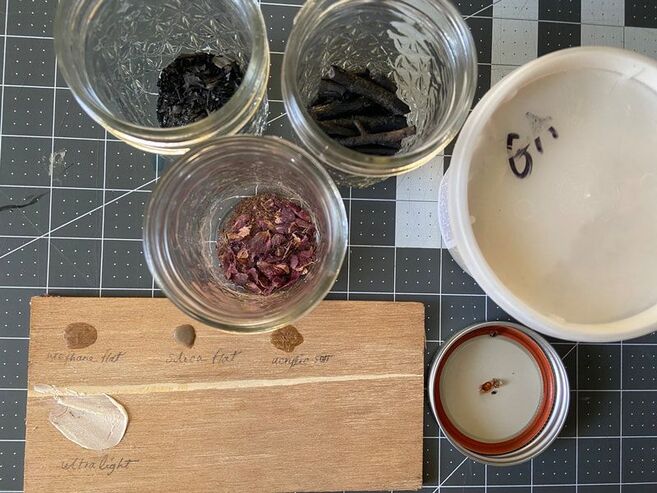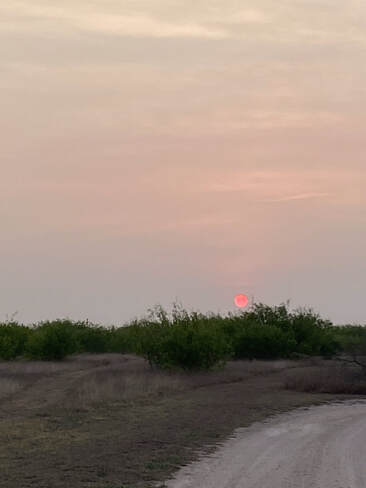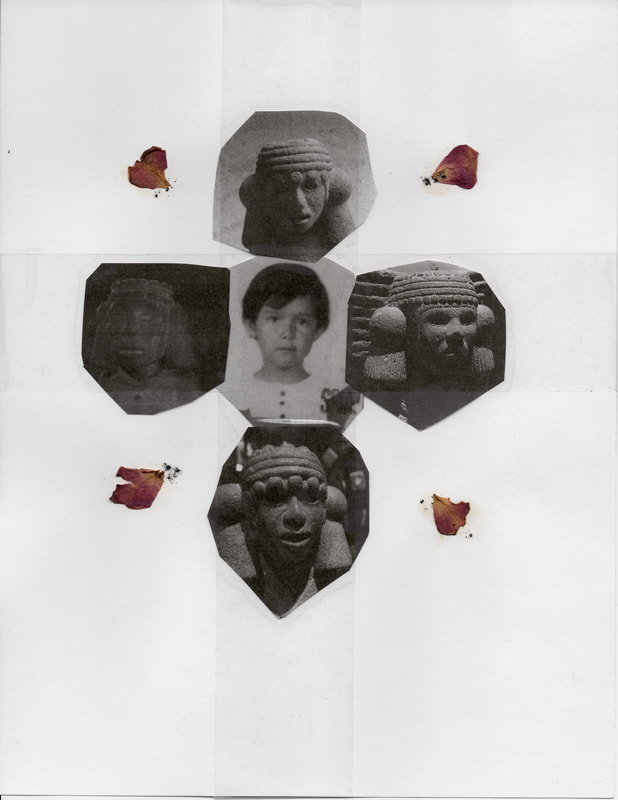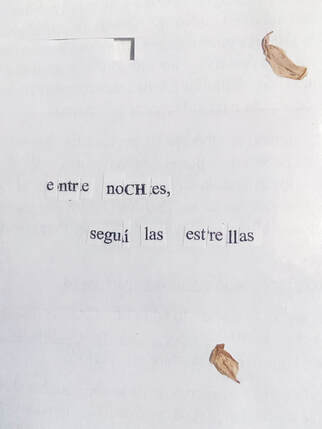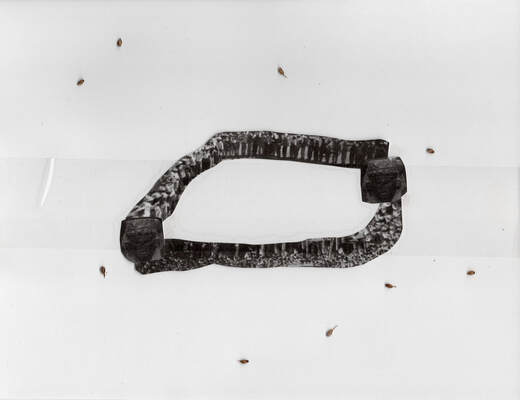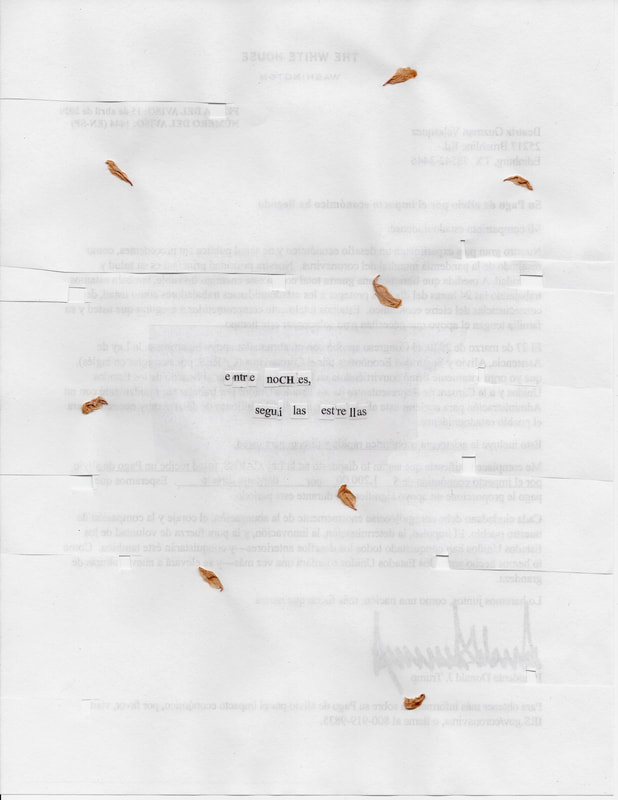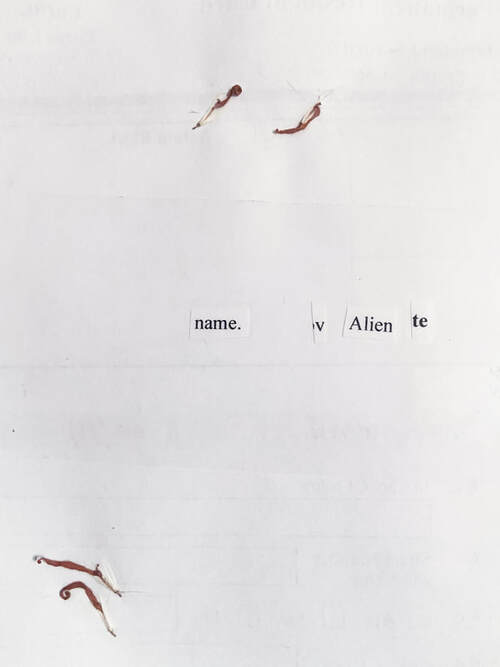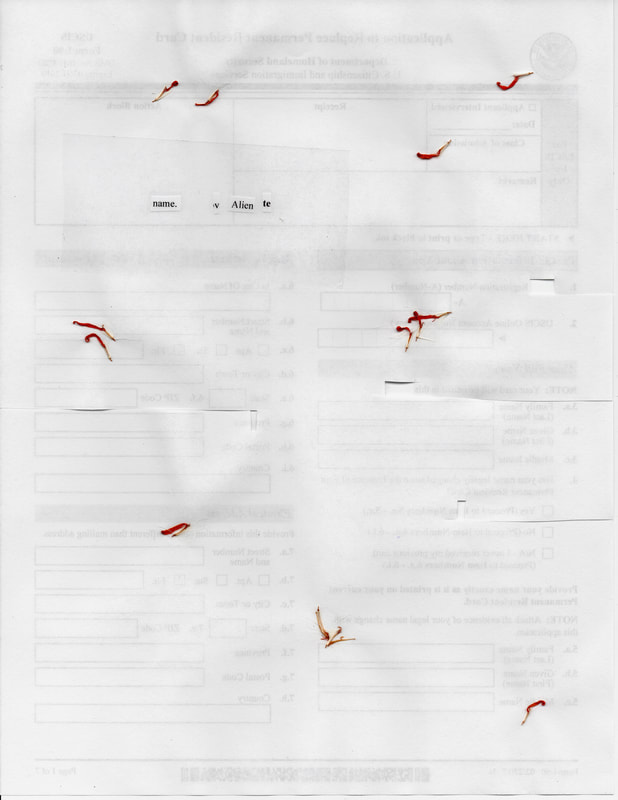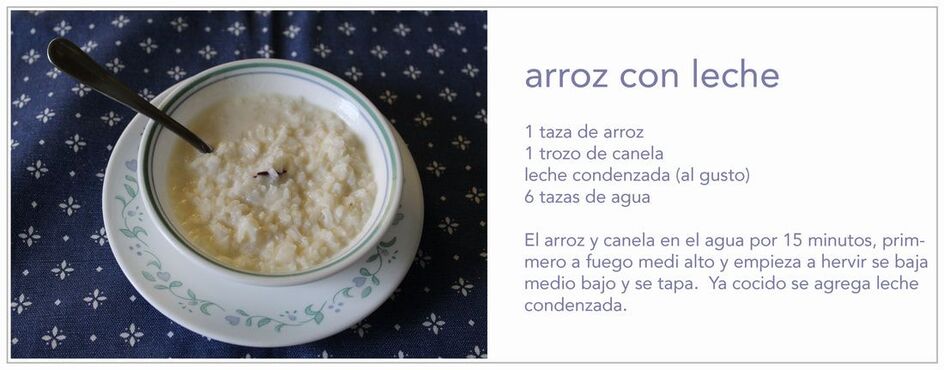connection to land
To have a connection to material and land is to hear the stories materials carry. I do not take but gather materials ethically sourcing each from a specific time and place. My practice uses natural and synthetic materials to transform generational trauma into harmonious rewritings.
entre noches uses a letter sent by 45 from the White House where he takes credit for the stimulus check given during the Covid-19 pandemic. As a way to take back my reality, I turn the page and form with cut out words from the letter a poem: "entre noches/segui las estrellas" [in between nights/ I followed the stars]. In this act, I seek to rewrite my story within controlling narratives coming from political dehumanization. I speak about how during the most difficult days of the pandemic where my border community was dying at a fast rate, I walked at midnight seeking hope and refuge in nature. Around the poem, I disperse apricot flower petals from my mother's garden to create movement as a way to symbolize the shifting of narratives.
In reimagining, I go out searching for pieces of material to make myself whole again. I turn to sage, broken mirrors and circles to harmoniously reorganize the presence of photographs in newspapers that carry injury to my immigrant community. I sense the energy of each material as I disperse them in a circular motion: the brokenness of mirrors and the possibility of seeds. I mirror those that gaze onto the work to ask for their engagement and to form part of the picture. Within layers, I unite fragments without hiding traces of agony within the photograph. I enclose all pieces with a circle that unravels at its ends and on top of a muted structure. I move them around this circle to create possibilities like the possibility of an image being set free.
valiente [brave] uses immigration forms from my father's resident card renewal to speak about the trauma endured during the process to request permission to stay in the United States. I turn the page seeking to transform the language used in the application with a lined poem: "name. valiente" [name. brave]. In this action of cutting out words from an oppressive system, I form my own language to rewrite the story of my father.
In mefenufudofo, I record my mother's preparation of menudo, a Mexican traditional dish, for the new year. Using my mother's composed language, I speak about our mother-daughter connection, our multiple identities and cycles. The language she taught me has no name but only rules: after each syllable add a repeating consonant with the previous vowel. As a young girl, my mother's life revolved around this composed language at the Mexican border town of Reynosa to speak in secrecy with other young girls while adults were in the room. As a border woman, I use this language to escape the constraints of the Spanish and English language, and more so the identity these languages carry.
rewriting
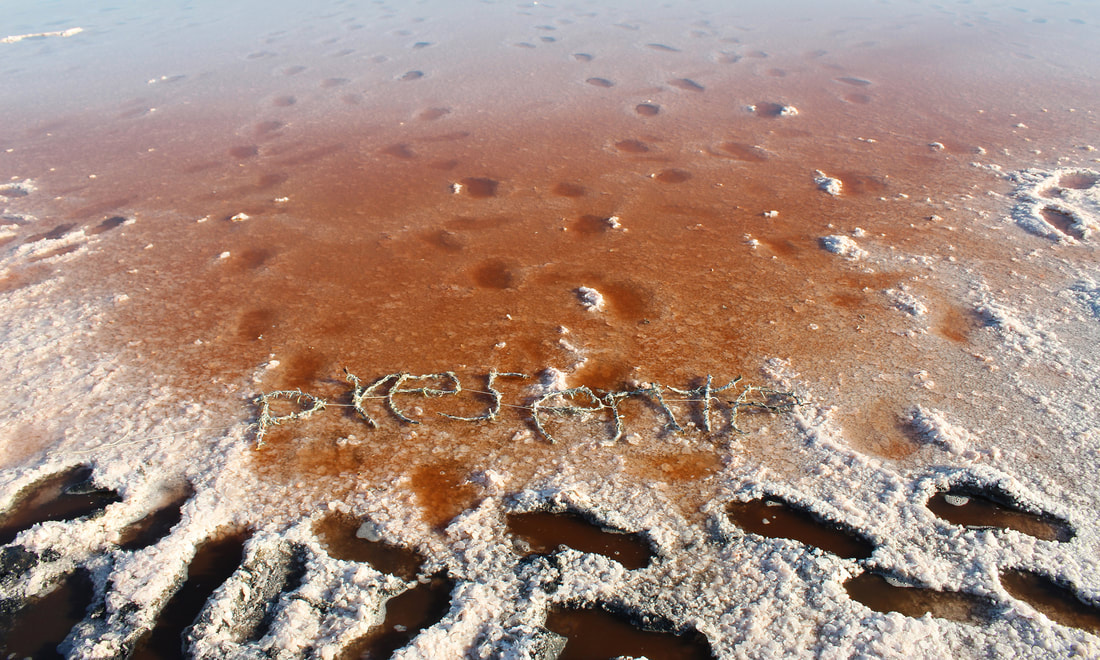
presente (sal del rey), mesquite branches, sage and cotton thread, 2020
I carry words formed out of branches and leaves into spaces I fear as a woman of color. These spaces of wilderness hold histories of persecution and my writings on land allow for statements to be spoken. presente– in spite of all the history the land carries, I am present.
As I enter Sal del Rey, the pathway to reach the salt lake is surrounded by monte. El monte, a wilderness, is unknown to me. Entering is as much a promise of paradise as of threat. For years, the space of el monte has been used for violence and magic. I find it difficult to enter the space of Sal del Rey as a Wildlife Refuge and forget the atrocities border communities endured and continue to endure in this land. I enter the space with letters I formed out of mesquite branches and fresh sage. As I step to the shore line, my body sinks. I place the word "presente", a cry of protest I have learned to say to validate the precarious life of politicized identities. Presente. Presente, on top of salt, red water and mud as a way to declare and harmonize.
As I enter Sal del Rey, the pathway to reach the salt lake is surrounded by monte. El monte, a wilderness, is unknown to me. Entering is as much a promise of paradise as of threat. For years, the space of el monte has been used for violence and magic. I find it difficult to enter the space of Sal del Rey as a Wildlife Refuge and forget the atrocities border communities endured and continue to endure in this land. I enter the space with letters I formed out of mesquite branches and fresh sage. As I step to the shore line, my body sinks. I place the word "presente", a cry of protest I have learned to say to validate the precarious life of politicized identities. Presente. Presente, on top of salt, red water and mud as a way to declare and harmonize.
In deshacer lineas [dissolve lines], I use collage and video to reimagine the long waitings lines my border community have been forced to endure throughout the years. I use photographs of immigrants and refugees waiting to receive resources like food, health exams and vaccinations or waiting to be processed into systems like the bracero program, incarceration and immigration apparatus. (stills of deshacer lineas, 2021, one channel video, video on loop)
arroz con leche is part of a community project on gathering specific recipes used by my mother to cut back on food expenses. In this project, I use a postcard to write ingredients and directions needed to make a traditional Mexican dessert with only 4 ingredients; all chosen for their low cost. As I pass this recipe to my community, I give continuity to the resilience and creativity the women of my family have passed on to me when resources were scarce.
